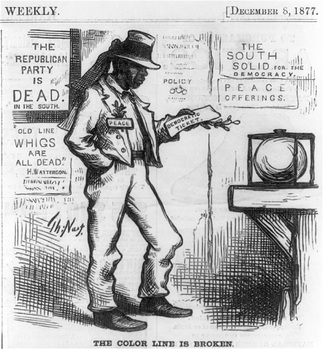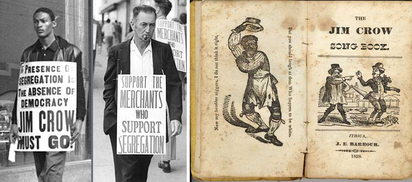"We the people" really brings out the idea of who the "we" is...
Black Suffrage in the Antebellum Period:

The Thirteenth, Fourteenth, and Fifteenth Amendments to the U.S. Constitution, collectively known as the Civil War and Reconstruction Amendments, were passed between 1865 and 1870. They outlawed slavery and extended civil rights and suffrage to U.S. citizens, including former slaves. Although Republicans were able to secure black suffrage in Southern states under Reconstruction, many states in the West and North still denied the right to vote to African-Americans. The 15th Amendment of 1870 prohibited denying suffrage to anyone on the basis of color, race or because of being a former slave. The nation grew weary of Reconstruction during the 1870s, and Rutherford B. Hayes won the presidency in 1877 in a contested election when he promised to remove all federal troops from the South. White Southerners, most of whom had regained political rights even if they had been Confederates, returned to power and came up with ways to disenfranchise black voters.
Jim Crow Era:
The Jim Crow laws were state and local laws in the United States enacted between 1876 and 1965. Some examples of Jim Crow laws are the segregation of public schools, public places and public transportation, and the segregation of restrooms, restaurants and drinking fountains for whites and blacks. The U.S. military was also segregated. Women gained the right to vote in 1920, but Jim Crow racial segregation and disenfranchisement limited Black women’s suffrage. Although African-Americans were systematically denied the right to vote during the Jim Crow era, many resisted this oppression by both exposing and subversive means.

